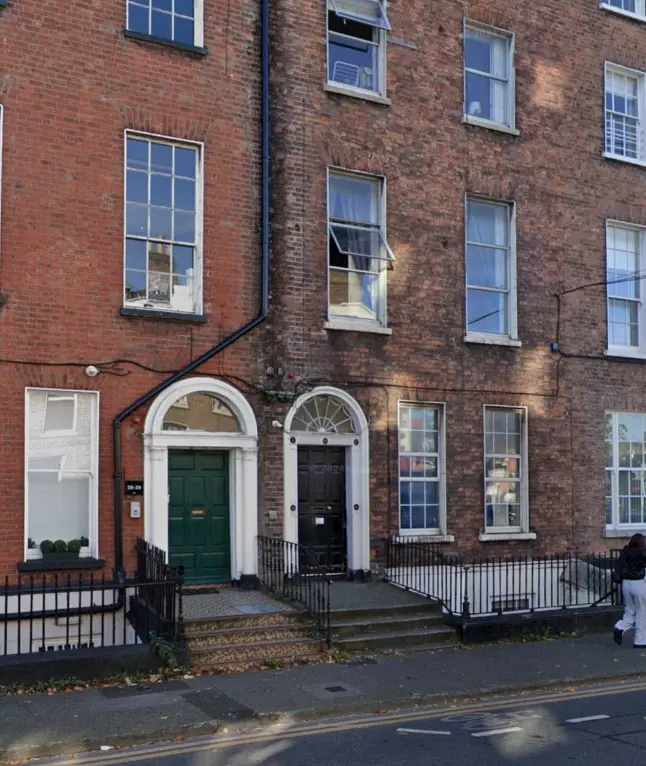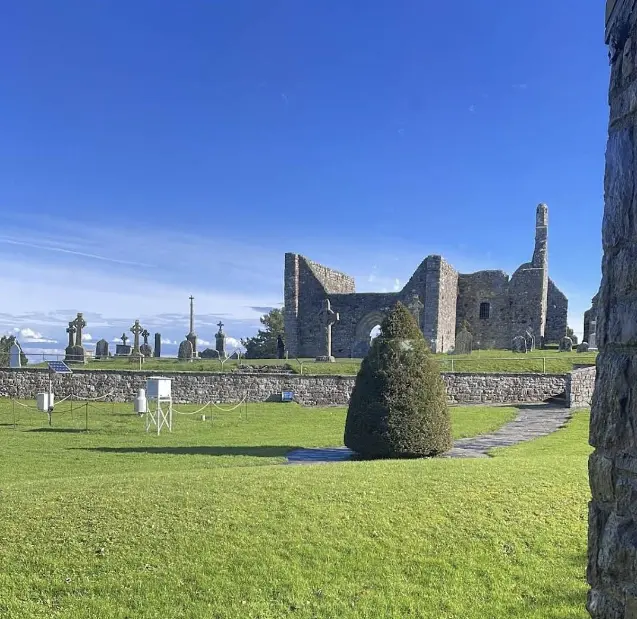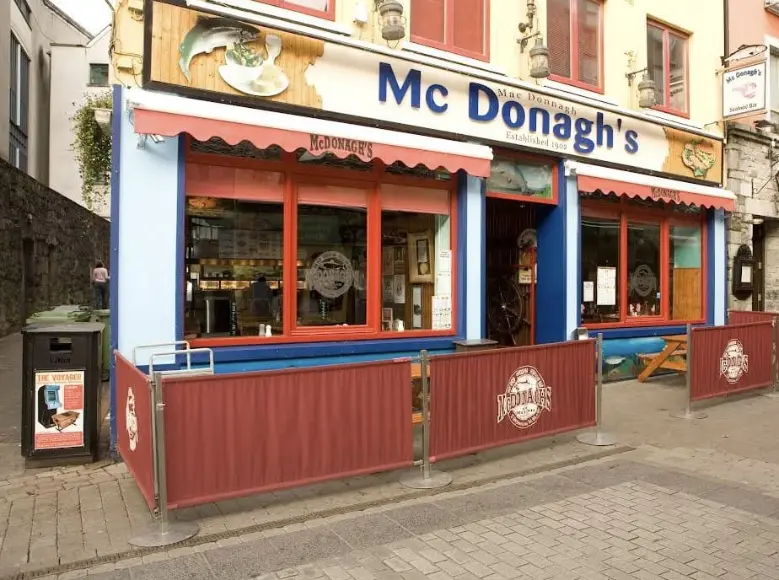There’s something special about every trip from Galway to Dublin. Maybe it’s the quiet moment when the train starts to move, or the way the landscape slowly changes from wide open fields to city streets filled with life.
I’ve made this journey so many times, yet it never loses that spark of excitement. Galway always feels free and open, filled with sea air and laughter spilling from pubs. Then comes Dublin, full of stories, museums, and food spots that keep you wandering long after sunset.
If you’re planning the trip and want real advice from someone who has done it again and again, this Galway to Dublin travel guide will help you find the smoothest route, the best stops, and a few small tricks that make the whole ride feel effortless!
Galway to Dublin Distance and Travel Time
When you start planning, the Galway to Dublin distance is one of the first things to check. It’s roughly two hundred to two hundred twenty kilometres, and most people cover it in about two to two and a half hours by car. The drive follows the M6 motorway, joining the M4 near Dublin, and it’s an easy route with smooth roads and clear signs all the way. There’s a short tolled stretch near Ballinasloe that costs around €2.30 for cars, so it’s worth keeping a few coins or a card handy.
If you’re driving, fuel for the round trip usually costs about €35 to €40, depending on your car and petrol prices. The journey stays relaxing if you avoid rush hours around Dublin. For anyone who prefers to skip driving, frequent trains and coaches connect both cities all day long.
Irish Rail trains usually take two and a half hours, and buses take about the same, depending on traffic. I always check timetables a day before my trip so I can settle on a plan that fits my mood. This simple planning step makes traveling from Galway to Dublin by car or public transport much easier and stress-free.
The Easiest and Most Predictable Option
If you like comfort and calm, the Galway to Dublin train is the easiest choice. Irish Rail runs regular intercity services that connect both cities smoothly. The seats feel soft enough for long rides, tables make it easy to read or work, and the carriages stay clean and bright. What I love most is the steady pace because there are no traffic lights and no tolls. Just a quiet time to relax with a coffee and watch the countryside change.
Tickets for the Irish Rail Galway to Dublin route often cost less when booked early, so I usually check the Irish Rail website a few days ahead. Fares start around €21 for standard tickets, and saver options often appear. The trip takes about two and a half hours and ends at Heuston Station, just west of Dublin city centre. From there, the Luas Red Line tram brings you into the heart of the city in minutes, and taxis or buses wait right outside. If you have a flight later that day or an appointment in the city, the train keeps your schedule stress-free and predictable.

Affordable and Frequent Services
If saving money or choosing flexible times matters more to you, the Galway to Dublin bus is a solid pick. GoBus and Citylink all run frequent departures through the day and night, and many routes go straight to Dublin Airport as well as the city centre. The Galway to Dublin coach service usually takes two and a half to three hours, depending on traffic, matching train travel times for a fraction of the cost.
Modern coaches are surprisingly comfortable now with wide seats, air conditioning, and charging ports on most buses. Luggage goes neatly under the bus, so your seat area stays open. Fares can start from €13 if you book early online.

I often choose a coach when my flight leaves from Dublin Airport, since I can go straight there without changing transport. For day trips into the city, I prefer the routes that stop near the main bus stations so I can start exploring right away. The best part is that there’s always another departure within the hour, so you never feel stuck waiting too long
Driving Galway to Dublin Flexibility and Scenic Stops
Taking the wheel gives you full control of the journey. Traveling Galway to Dublin by car feels simple and open, with smooth motorways and clear signs all the way. The drive from Galway to Dublin usually takes two to two and a half hours, but I like to add a little extra time when entering Dublin because traffic often slows down near the city. There is one small toll near Ballinasloe that costs just over €2.30, so it helps to keep some change or a card ready.
Parking in Dublin can be expensive, so I often use park and ride areas or reserve a space in advance. It saves time and avoids circling busy streets. Driving suits days when I want to leave early, travel late, or stop whenever something interesting catches my eye. It’s also easier when carrying extra luggage or shopping bags. The best part is the freedom to make small changes to your plan without worrying about timetables.
Scenic and Cultural Stops Along the Route
If you have a few extra hours, turning this trip into a short Galway to Dublin road trip is worth it. The route passes through towns that show a softer side of Ireland and make the drive memorable. Athlone sits almost halfway and has a lovely riverside walk, a small but well-kept castle, and plenty of cafés for a quick bite.
Not far away, Clonmacnoise offers one of the most peaceful historic sites in the country. You’ll find ancient high crosses, round towers, and a visitor centre that explains the story of early Irish monks in a calm, thoughtful way.

Whiskey fans can take a small detour to Tullamore DEW Distillery for a distillery tour and tasting session that shows how traditional Irish whiskey is made. These places to visit between Galway and Dublin make the motorway feel less like a transfer and more like a small adventure filled with discovery.

Costs and Budget Planning
When it comes to planning your Galway to Dublin cost, a few quick checks make a big difference. Driving usually adds up to around €40 to €50 for fuel and tolls, depending on your car. For public transport, early booking can save a lot. Trains often drop to lower prices during off-peak hours, and saver fares appear if you book in advance.
Coaches tend to be the cheapest, with early online tickets sometimes starting at €13. I always compare both before deciding. The Galway to Dublin travel budget also depends on your arrival plans. Add the time and cost of getting from the station or stop to your next destination in Dublin, and you’ll have a full picture before you go. A little preparation makes the journey smoother, cheaper, and far more relaxed
Smart Planning Tips for a Smooth Trip
Good planning turns a normal trip into an easy one. These small habits might sound simple, but they remove a lot of stress. Always buy your tickets online and keep the digital copy ready on your phone. Pack a light jacket because air conditioning on trains and coaches can sometimes feel cooler than expected.
When you arrive at Heuston Station, use the Luas tram or a short taxi ride to reach the city centre faster. For anyone moving around the city, getting a Leap Card is one of the smartest travel tips for Ireland. It works on buses, trams, and commuter trains and often saves both time and money. Before leaving, a quick look at live updates for trains or roads keeps your plan smooth and flexible.
Little Comforts That Make a Big Difference
A few thoughtful habits always make the journey feel lighter. I like to grab a coffee before departure and carry a small charger so I never have to search for one mid-trip. A reusable water bottle helps on long rides, and a quick snack keeps the energy up before arrival. On trains or coaches, I usually pick a window seat and enjoy watching the Irish countryside roll past.
When driving, I prefer stopping at local cafés or small towns for a short break instead of rushing through service stations. These simple Irish travel essentials keep the day pleasant and turn travel time into something you actually look forward to.
Safety, Timing, and Realistic Schedules
Good timing keeps every trip smooth and worry-free. Trains in Ireland usually follow their schedules closely, and any changes appear early on the Irish Rail updates page or app. Coaches and cars share the same roads, so roadworks or weekend traffic can slow things down, especially near Dublin. I always plan a thirty to forty-five minute buffer for peace of mind. It’s one of those small Ireland travel safety tips that saves you from rushing or missing a flight connection.
If you’re planning longer routes or weekend journeys, check live updates on the Transport for Ireland website. It combines trains, trams, and buses in one place. I also keep a quick backup route in mind in case of delays. This habit turns travel planning in Ireland into something calm and reliable instead of stressful.
Food Stops Worth Noticing
Tasty stops make the journey feel more like a trip than just a transfer. Galway has no shortage of great bites before you leave, like McDonagh’s for classic fish and chips, or Ard Bia at Nimmos for a comforting brunch by the water. Around the halfway mark, Athlone offers some of the best food stops in Ireland, especially for pub lunches or fresh pastries at Beans & Leaves Café. If you prefer a warm meal on a cold day, try The Left Bank Bistro for something hearty and homemade.

Further east, Tullamore has charming spots that pair well with a distillery visit, like The Foxy Bean Café is a friendly choice for quick coffee and cakes. Once you reach Dublin, your options multiply fast, from the famous Hatch & Sons for Irish breakfast to Etto for dinner that always feels personal and relaxed. These small discoveries are what make you forget you’re even traveling. Having a short list of where to eat between Galway and Dublin keeps hunger from stealing time and helps you enjoy the day more fully.

Choosing the Best Option for Luggage and Groups
When traveling with friends or family, space and comfort can change your plan completely. Trains are convenient but fill up quickly during peak hours, so I always board early to find a spot for bags. Coaches give generous luggage space under the cabin, which is perfect for larger suitcases or gear. Cars, of course, give the most freedom and a full boot to fit everything without worry.
For small groups, a coach or train works well since everyone can relax together without one person driving. Larger groups or families might find renting a van more practical. These small Ireland group travel tips help avoid unnecessary stress and keep things organized from start to finish. Every mode of transport has its own perks, and comparing a few Irish transport options before you go makes planning smoother.
My Personal Rule for Choosing the Right Mode
After years of making this trip, I’ve built a small system that never fails. The train wins for reliability and comfort, ideal for days when timing matters most. The coach wins on cost and convenience, especially if you’re flying out of Dublin Airport or traveling late at night. The car wins on freedom and flexibility, letting you explore small towns or countryside views that public transport skips.
Whatever option you choose, book early when possible and plan your arrival point carefully. This small detail is what keeps Ireland travel planning smooth. In the end, the best way to travel in Ireland is the one that matches your schedule, your company, and your mood that day.
Final Thoughts on Galway to Dublin
Every journey across Ireland has its own quiet charm. The roads stay open, the trains stay steady, and the people you meet along the way make it memorable. Traveling this route connects two completely different sides of the country, like the sea air of Galway and the cultural pulse of Dublin. Whether it’s your first or tenth trip, it still feels like a story unfolding mile by mile.
Good planning and light packing keep everything easy. Once you settle into your seat or grip the steering wheel, you’ll understand why cross-country travel in Ireland feels so special. It’s not just about reaching the destination but enjoying the small details along the way. Every trip becomes part of your growing Irish travel experience, one that never quite feels the same twice.
If you are looking for more intercity or international trip advice, please follow the Dublinz‘s Facebook and Instagram accounts and get notified whenever a new article comes out!